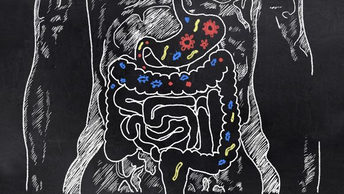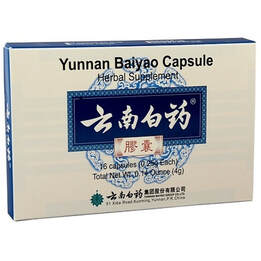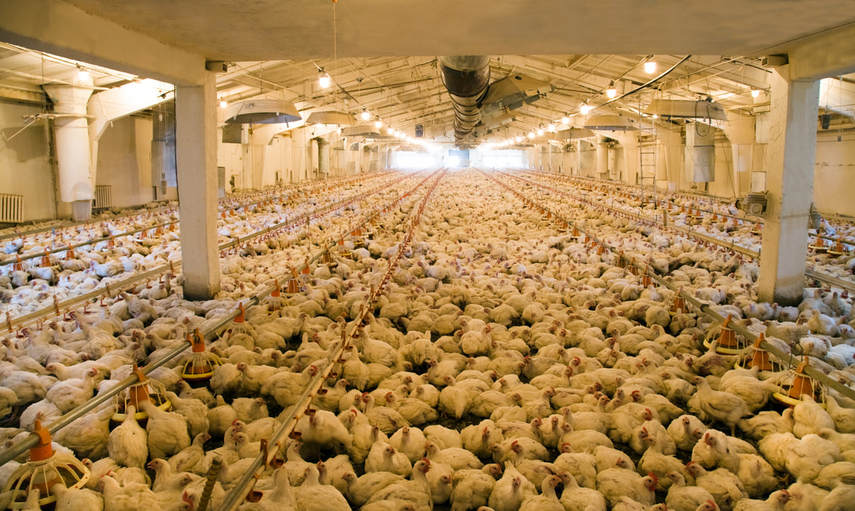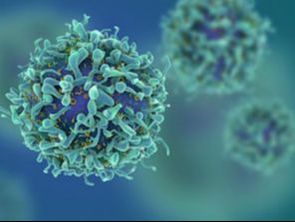
A study performed by University of British Columbia links the colonization of gut bacteria to asthma, highlighting the importance of a healthy gastrointestinal microbiome.
Compared across 319 children from birth to three years of age, twenty-two were designated high-risk and eight from that group were diagnosed with asthma. The criteria were detection of low levels of the bacterial genera Lachnospira, Veillonella, Faecalibacterium, and Rothia from the collected fecal and urine samples. This study identified this trend in infants as young as three months of age which they defined as a critical period for attaining the appropriate microbiome. This is the time when the immune responses that protect the body from asthma develop. It is thought that gut bacteria communicate with mucosal surfaces throughout the entire body. Factors that increase risk for asthma development via improper gut microbiome include bottle-feeding, early exposure to antibiotics, Caesarian section as opposed to natural birth, and living in cities rather than rural areas. This study suggests a correlation between gut microbiota and asthma with compelling evidence but does not have a clear evidence-based connection to prove the link. Supporting evidence shows restoring these bacteria in mice improves inflammation in airways of the offspring, although this is not studied here in humans. Despite that fact, some ideas for treatment are being composed by the research group. Some treatments in the future could include a commercial flavored capsule that would introduce these 4 critical groups of bacteria into a child’s gastrointestinal tract. Read more about the inspiration for this blog post here: https://www.aaas.org/news/missing-gut-bacteria-raises-infants-asthma-risk Read about the link between the gut and lung (Gut-Lung Axis) here: https://www.ncbi.nlm.nih.gov/pmc/articles/PMC6337651/ Authored by Nick LinznerNicholas Linzner grew up in Northridge, CA and has always cared deeply for animals and their interactions with the environment. He moved to San Luis Obispo, CA to complete a B.S. in Animal Science, with a minor in Equine Science in 2018. Shortly before graduating, he joined the team at RAHU in order to learn more about integrative veterinary medicine and contribute towards the growth of the company. 
1 Comment

Yunnan Baiyao is an herbal medicine most notably used as a potent hemostatic agent, and is becoming a more popular treatment option in the United States. The most common current indications are to aid in bleeding problems, bruising and trauma, as well as decreasing bleeding and slowing progression of pathologies in conditions such as vascular tumors. It has a long history beginning in the Yunnan province of China. Literally translating to “white medicine”, this herb started as a secret formula that was used primarily to save soldiers in wars. It first gained notoriety in the war between China and Japan, then was found being used in the Vietnam War. Since then, it has been accepted into veterinary medicine for its many uses in addition to emergency situation control. In cases of hemorrhage, it can be used topically where applicable and orally, simultaneously. It has many herbs in the formula, the most critical being Notoginseng. Notoginseng’s 3 key components are:
This potent herb is safe for use in many species, with some very intriguing properties as seen in traditional Chinese herbal medicine. Yunnan Baiyao is known as a ‘warming herb’, a property of herbs that is generally correlated with increased circulation. It is used to break up stagnant blood flow and relieve certain sequelae of poor circulation. The popularity of this medicine continues to grow as more uses are discovered. Each package as shown above contains two crucial medicines. The more abundant ones are the Yunnan Baiyao herbal combination, and the smaller red pill is the more potent version. This should not be thrown away. It is used more for emergency situations that involve sudden and acute hemorrhage. If it isn’t needed, it should be stored safely in case of emergencies. This post was inspired by A Time to Heal’s article on Yunnan Baiyao, which is a great source for more information on the product. Uses for surgery and disorders: http://www.itmonline.org/articles/yunnan_paiyao/yunnan_paiyao.htm History and development of Yunnan Baiyao: http://www.itmonline.org/jintu/yunnan.htm Uses in a first aid kit: https://drjakefratkin.com/wp-content/uploads/2013/10/Three-Essential-Herbal-Products-for-your-First-Aid-Kit.pdf Authored by Nick LinznerNicholas Linzner grew up in Northridge, CA and has always cared deeply for animals and their interactions with the environment. He moved to San Luis Obispo, CA to complete a B.S. in Animal Science, with a minor in Equine Science in 2018. Shortly before graduating, he joined the team at RAHU in order to learn more about integrative veterinary medicine and contribute towards the growth of the company.  
There has recently been a recall for dog foods containing high levels of vitamin D. These potentially toxic levels can cause a variety of organ, nerve, muscle, and skeletal problems. Vitamin D’s main effect is to increase calcium absorption from the gut and kidneys. It also acts in concert with hormones from the parathyroid gland to start pulling calcium from the bones. Think of those as the two keys to a lock that have to be turned simultaneously in order to work. All of this calcium that gets pulled then goes into the bloodstream and gets distributed to muscles, nerves, and major organs in the body. This can easily lead to muscle and bone diseases. If you think your pet food might be affected by the recall, here’s what you can do:
Vitamin D toxicity can affect all animals. This recall primarily affects dog foods, but we want to take the time to remind you to check on your cat, farm animal, or reptile’s diets. Food is the best preventative measure for health. In cases like vitamin D, it is important to make sure you are able to supply your pet with the right amount and form. Be sure to take into account environmental factors that affect vitamin D intake. VCA hospitals: https://vcahospitals.com/know-your-pet/vitamin-d-poisoning-in-dogs FDA fast facts, list of brands: https://www.fda.gov/animalveterinary/newsevents/ucm627485.htm Vitamin D levels for a 500kg working horse: https://aaep.org/sites/default/files/issues/proceedings-11proceedings-z91001113120p.pdf Reptile supplements: http://www.reptilesmagazine.com/Supplemental-Nutrition-for-Your-Reptiles/ Authored by Nick LinznerNicholas Linzner grew up in Northridge, CA and has always cared deeply for animals and their interactions with the environment. He moved to San Luis Obispo, CA to complete a B.S. in Animal Science, with a minor in Equine Science in 2018. Shortly before graduating, he joined the team at RAHU in order to learn more about integrative veterinary medicine and contribute towards the growth of the company.  Are all chickens created equal? The answer may actually surprise you... As many of you know, we have recently rolled out our Animal Diet Formulator. This software helps users create a complete and balanced fresh food diet for your dog or cat. For those of you that own the software (yes, it is available of purchase), you might have also noticed that there are options when it comes to the type of chicken you are using in your recipe. That's because while there are similarities between sun raised and indoor chickens, overall they offer different levels of nutrients to your pet and can affect how balanced the diet really is. While we do want to bring attention to the difference in quality, we also want to shed light on the living conditions of chickens that do not have proper access to the outdoors. We at RAHU love animals. And that means the animals that help feed our four-legged companions (and us), too. So. What is the difference?  Indoor chickens are typically raised in CAFOs (Concentrated Animal Feeding Operation) that provide large barns on concrete pads capable of containing tens of thousands of animals with only about 1/2 square foot of space per chicken. CAFO chickens do not leave the structure and cover of the building, resulting in very different nutrient density than chickens exposed to sunlight (pasture raised). They also require feed with antibiotics and growth promoting drugs in order to produce meat for market in several weeks. Several chickens in CAFOs die due to the failure of organ function keeping up with muscle mass development. "I don't have a problem with death, but I do have a problem with suffering." -Dr. Barbara Royal Pasture raised chickens are allowed to freely move from a simple structure to a designated pasture where they can forage grasses and bugs, in addition to high quality grain feeds for adequate development. Designated pastures are typically rotated every few days for sustainability. The structures provided on most pasture raised farms allow 1 square foot of space per chicken, but chickens will also spend most of their day outside of the structure. A variety of activity with increased UV exposure results in chickens that are more nutrient dense, with a slightly different fatty acid profile, fat/protein ratio, and increased vitamin D from UV-B synthesis of cholesterol in sun-raised chickens. This is why when purchasing food from our feathered friends, we fully support looking for the "pasture raised" label. By doing so, you help support sustainable and humane farming practices. Good for your pet. Good for the earth. This is why when purchasing food from our feathered friends, we fully support looking for the "pasture raised" label. By doing so, you help support sustainable and humane farming practices.
Good for your pet. Good for the earth. 
One of the major issues currently facing the veterinary community is the debate on the discussion of cannabis between veterinarians and clients. Unlike human doctors, veterinarians were not legally able to discuss the use of cannabis products with clients until very recently.
If this is a topic that interests you, here is where you can go for more information! For more on prior legislation: https://www.thecannabispet.com/veterinarians-discuss-cannabis/ The recent bill passing, legalizing discussion with clients: https://cvma.net/government/legislative-issues/ab-2215-kalra-medical-advice-use-of-cannabis/ For more on the science behind cannabis: https://cannacompanionusa.com/faq/cannabis-science/#ECS-2 Authored by Nick LinznerNicholas Linzner grew up in Northridge, CA and has always cared deeply for animals and their interactions with the environment. He moved to San Luis Obispo, CA to complete a B.S. in Animal Science, with a minor in Equine Science in 2018. Shortly before graduating, he joined the team at RAHU in order to learn more about integrative veterinary medicine and contribute towards the growth of the company.  
You may be familiar with the current issue of anti-microbial and pesticide resistance in medicine and agriculture, but what you may not know is that the emergence of resistant “superbugs” is a systemic and worldwide problem that is shaking the status quo and forcing some conventional drugs out of the picture. While scientific bodies seek large-scale solutions for the growing threat to the health of our world, you as an animal healthcare professional, can help in your own way. Your alternative therapies can enter the picture and contribute to the fight!
Here are the facts:
Authored by Marie WiemannMarie Wiemann grew up in San Luis Obispo county with a passion for learning about, caring for, and enjoying animals. She stayed local to obtain her B.S. in Animal Science from Cal Poly SLO in 2017 and, shortly after graduation, joined the RAHU team to help them build their resource library. She will continue to work with RAHU as she begins vet school at UC Davis this fall.  Due to both a sudden increase in demand, and an influx of relevant health information, we have had to supercharge our online access to RAHU Education. We have chosen the secure and versatile Thinkific educational platform for our community. Moving forward, RAHU Courses and Certifications will be featured on Thinkific.
We expect you will continue to find the most practical and effective information from our Thinkific powered RAHU courses, resources, mentors, educators and community. Remember that RAHU members get access to member only resources and discounts on courses, certifications and store items. Check out the great benefits of a RAHU membership. Thanks for being a part of this exciting year! – Dr. Natasha Lilly  Is sunny weather planned for your spring break this year? Well we’ve got you covered with our Top 7 Spring Break Tips for you and your furry friend! 1.) Research the location and phone numbers for local emergency veterinary hospitals near your vacation spot. 2.) Bring your RAHU Integrative Veterinary Emergency Kit (available on our website) so you can be prepared for the unexpected! Having a travel kit of medications/supplements/bandages for injuries, mild GI upset/loose stool from the stress of travel or an herbal anti-inflammatory can be a lifesaver! Also put any current medications/supplements in the kit. Make sure you put a copy of your current Rabies tag number and any medical information you might need in your Kit. 3.) If you’re traveling south, make sure you bring an herbal flea and tick spray with you. While pests up north go away for the winter, they may be year-round in warmer climates. 4.) You may need to give heartworm (HW) prevention once you return from your trip. If you travel to a place where there are active mosquitos, medication for HW should be given after exposure. If a mosquito with HW bites your pet, the medication will kill the parasite if given within 60 days. If you prefer to avoid the use of HW prevention, you can test a full HW panel after exposure. Talk to your veterinarian about the best time interval for this blood test. 5.) If you plan to use herbal calming agents for your pet during travel, be sure to test their reactions to them BEFORE leaving for your vacation. Always talk to your veterinarian about safe options for your pet. 6.) Avoid making any changes to your pets diet or medications/supplements right before (or during) your trip unless absolutely necessary. If there’s an unwanted reaction it may be more difficult to manage if you are away from your primary veterinarian. 7.) Make sure your pet's identifying tags and microchip registration are up-to-date with a current cell phone that you will have with you when you are away. Keep the microchip company's phone number and their identifying number for your pet on a card in your wallet. With these health tips we hope you and your pets can stay wildly happy and healthy this holiday season!!! "Cats are the number-one pet in America, and we spend more annually on cat food than we do on baby food. Aloof, cuddly, sensitive, selfish, sweet, tough, complicated, playful, silly, elegant, unpredictable, and incredibly resilient, cats are highly entertaining." Cats certainly are "unpredictable" and we here at RAHU love them for that. However, it can be a little tricky when it comes to providing them with wild health. Take a look at this list created by, Dr. Barbara Royal for ways to keep your cat cool.
With these tips, we hope you can create a more harmonious relationship with your cat. Let us know how these tips have worked for you and your feline friend in the comment section and here's to Wild Health! MythConception: "Pet food labeled 'Grain Free', means it is species appropriate for dogs and cats"
FALSE. Just because a food is labeled "natural", or "grain free", doesn't mean it's an appropriate food to feed to you dog or cat. Follow Dr. Royal's "Quick Guide" for how to properly assess your pets food, so they can achieve wild health! Ignore pictures & the potentially misleading words and pictures on the front of the package. You can read them later. Go directly to the: INGREDIENTS -Ingredients are listed in order of weight before processing the food. -Are the meats or fish the first and maybe the second and third ingredient (s)? This is a good sign. -The next ingredients should not combine to be a lot carbohydrates. (Grains, potatoes, chickpeas, flours, corn, etc.) -Are there unneeded fillers, toxins, chemicals, dyes, and proteins from non-meats? -Is there ingredient splitting to move unwanted (carbs usually) further down the list? -Make a general assessment of what the ingredient list looks like to you -- healthy or not? GUARANTEED ANALYSIS Protein, Fat & Carbs are the three main components of food. One goes up and the other goes down. It's time for a little math... Guaranteed Analysis:
How To Calculate Carbohydrate Percentage (Because they do not usually put it on the label!)
-Subtract this total from 100% giving you a rough estimate of the percentage of carbohydrates.
-Subtract from this number both the percentage fat and the percentage protein. -Divide that number by the total dry matter amount and multiply by 100. This will be a rough estimate of the percentage of carbohydrate in the diet. Example: 100 - 78% moisture = 22% 22 - 2% fat = 22% 20% - 5.5% = 14.5 14.5 divided by 22 = 0.659 x 100 = 69% carbs in this wet food. In an ever changing pet food market, it's hard to support companies that have ethical practices and are doing their best to provide your pet with a biologically appropriate diet. Through tips like these, we hope to empower you to accomplish the extraordinary and keep the animals in your life, wildly healthy! Looking for more information regarding animal nutrition? Take a look at our courses and materials to learn more! |
AuthorWrite something about yourself. No need to be fancy, just an overview. Archives
July 2019
Categories |
|
© COPYRIGHT 2017. ALL RIGHTS RESERVED.
Terms of Use & Privacy Policy | [email protected] 4130 N. Rockwell • Chicago, IL 60613 |
